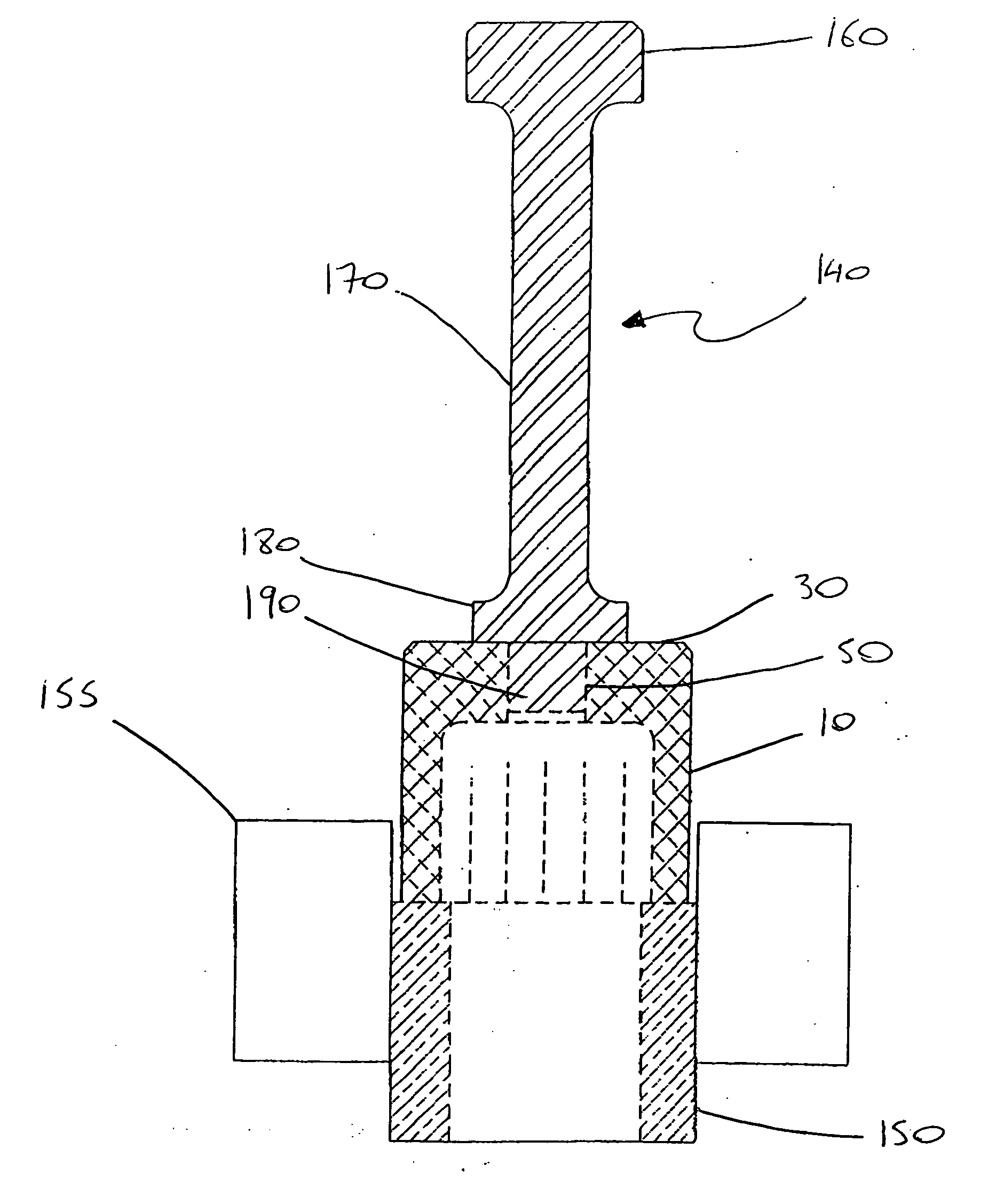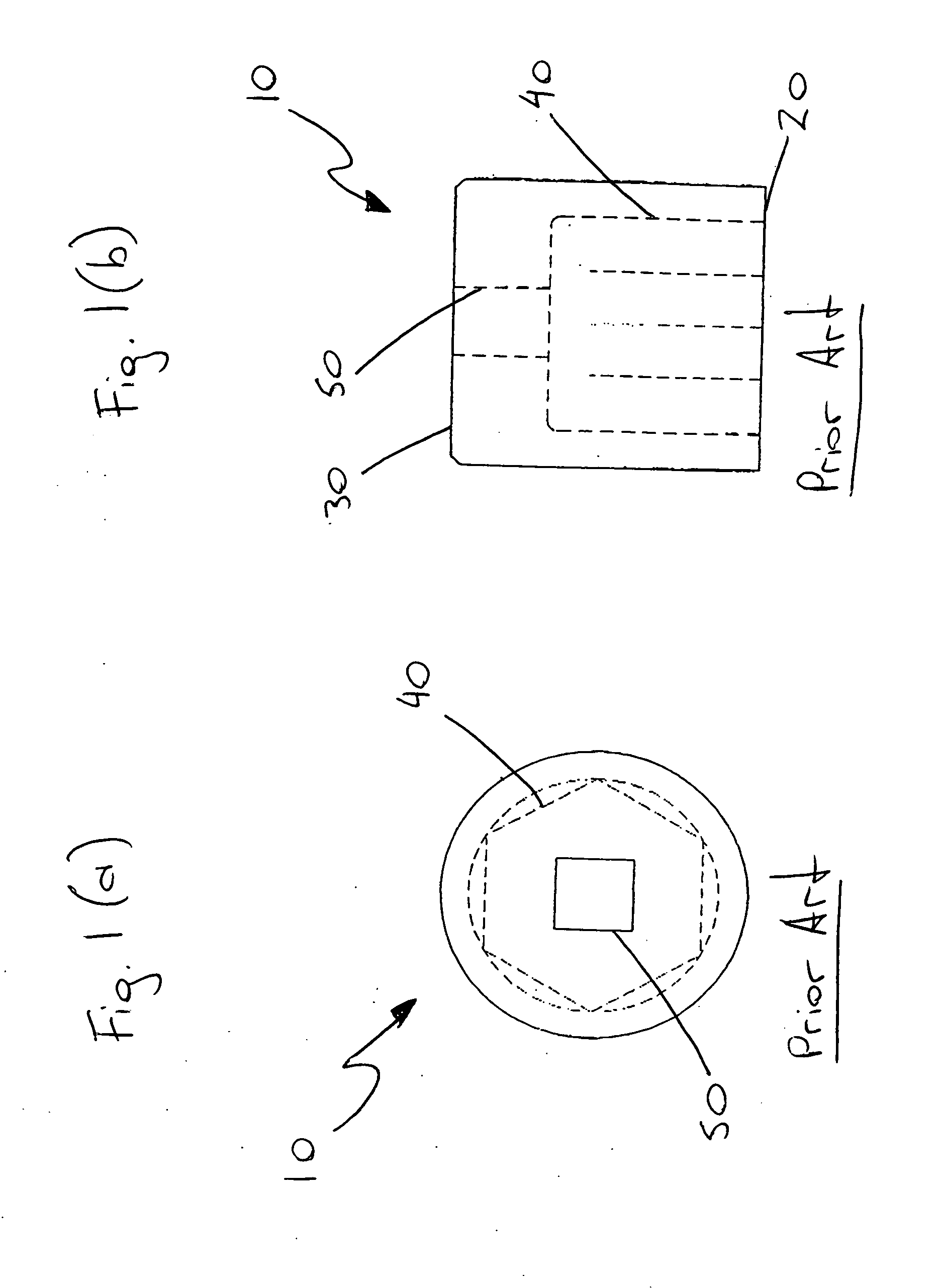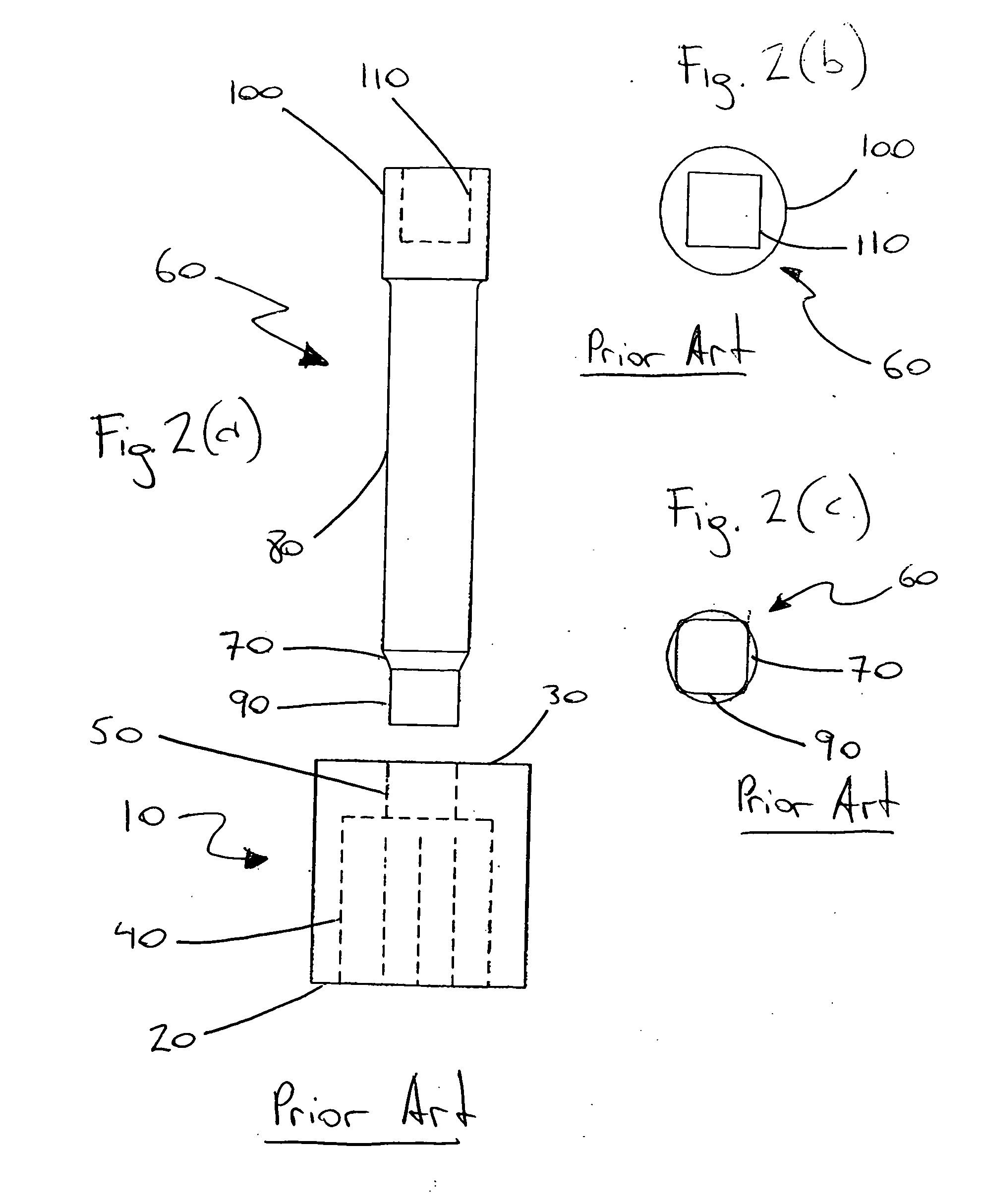Socket driver
a technology of sockets and drivers, applied in the field of sockets, can solve the problems of not being able or desirable to apply force directly damage the bearing, and striking the bearing with a hammer, so as to prevent damage to the bearing or bushing. the effect of preventing damag
- Summary
- Abstract
- Description
- Claims
- Application Information
AI Technical Summary
Benefits of technology
Problems solved by technology
Method used
Image
Examples
Embodiment Construction
[0021] Referring to FIGS. 1(a) and (b), a prior art socket 10 is shown having a socket end 20 and a drive end 30. The socket 10 has a hole 40 in the socket end 20 for receiving nuts and bolts and a drive hole 50 in the drive end 30 for receiving the square bit of a ratchet (not shown) or extension (see FIG. 2(a)).
[0022] Referring to FIGS. 2(a-c), a prior art socket 10 and extension 60 are shown. The socket 10 has a hole 40 for receiving nuts and bolts and a drive hole 50 for receiving the square bit 90 of the extension 60 (or the square bit of a ratchet). The extension 60 has a tapered section 70 between the body 80 and square bit 90, and a drive end 100 having a drive hole 110 for receiving the square bit of a ratchet (not shown).
[0023] Referring to FIGS. 1(a-b) and 2(a-c), when used in its intended application, a socket 10 of appropriate size is selected so that a nut or bolt is fittingly received by the hole 40. The square bit of a ratchet (or extension 60) is inserted into the...
PUM
| Property | Measurement | Unit |
|---|---|---|
| driving force | aaaaa | aaaaa |
| force | aaaaa | aaaaa |
| installation force | aaaaa | aaaaa |
Abstract
Description
Claims
Application Information
 Login to View More
Login to View More - R&D
- Intellectual Property
- Life Sciences
- Materials
- Tech Scout
- Unparalleled Data Quality
- Higher Quality Content
- 60% Fewer Hallucinations
Browse by: Latest US Patents, China's latest patents, Technical Efficacy Thesaurus, Application Domain, Technology Topic, Popular Technical Reports.
© 2025 PatSnap. All rights reserved.Legal|Privacy policy|Modern Slavery Act Transparency Statement|Sitemap|About US| Contact US: help@patsnap.com



